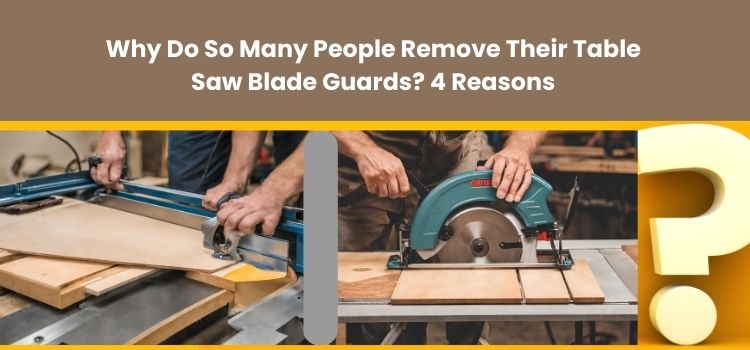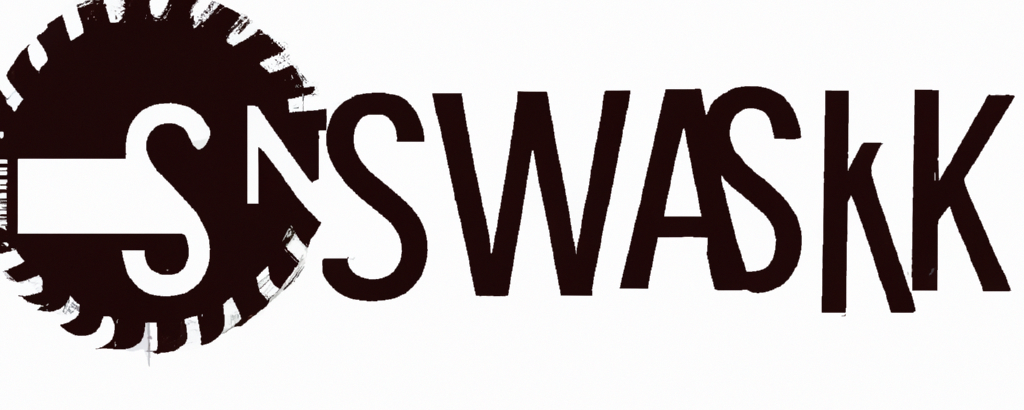Why Do So Many People Remove Their Table Saw Blade Guards? 7 Reasons

Table saw blade guards are an essential safety feature that helps protect users from accidental contact with the spinning blade. However, some people choose to remove their table saw blade guards for various reasons.
In this blog post, we will discuss the seven main reasons why people remove their table saw blade guards and the risks associated with doing so.
We will also explore the importance of table saw blade guards and the false sense of security that can come with their removal.
7 Reasons Why People Remove Their Table Saw Blade Guards
1. Difficulty in Seeing the Cut Line
Visibility Issues:
Table saw blade guards, while designed for safety, can sometimes obstruct the user’s view of the cut line. This can hinder precision, especially when attempting detailed or meticulous cuts.
Issues with Specific Blades:
For some setups, like when using a dado stack, the blade guard might block the view more than with other types of blades, making intricate work more challenging.
2. Interference with Certain Cuts
Limitations on Non-through Cuts:
Non-through cuts, where the blade doesn’t pass all the way through the material, can be tricky or even impossible with a blade guard in place. The guard can physically interfere with the workpiece.
Dado Cut Complications:
Dado cuts, which are grooves cut into the wood, are another example of where the blade guard might get in the way. With the guard in place, the setup might not function correctly or safely.
3. Inconvenience When Changing Blades
Ease of Blade Change:
With the blade guard attached, the process of changing blades can become more cumbersome. This added step can deter individuals from using the guard, especially if they switch blades often.
Time Consumption:
The few extra minutes it takes to remove and replace the guard during a blade change might seem trivial, but for professionals or those frequently changing their setup, this can add up, leading to the choice to leave the guard off.
4. Personal Preference
Comfort and Habit:
Some users feel more comfortable operating the saw without the guard, especially if they learned or have operated for years without one. This established habit can be hard to break.
Safety Beliefs:
While not necessarily a best practice, some individuals might believe they have enough experience and control over the tool that they don’t need the guard for safety reasons.
5. Compatibility Issues
Aftermarket Accessories:
Many users upgrade their table saws with aftermarket accessories which might not be compatible with the original blade guard.
Custom Modifications:
For those who make custom modifications to their saws for specialized tasks, the blade guard might no longer fit or function properly.
6. Cleaning and Maintenance
Ease of Cleaning:
Sawdust and debris can accumulate under the guard. Removing it can make cleaning these parts more straightforward.
Regular Maintenance:
For individuals who regularly maintain and tune up their saws, removing the guard can provide easier access to the blade and other components.
7. False Sense of Security
Over-reliance on Guard:
Some believe that having a guard might lead to over-reliance on it for safety, potentially making one complacent about other safety practices.
Direct Awareness:
Without a guard, users tend to be more conscious and alert about the blade’s movement and their hand positioning, potentially leading to more cautious use.
Conclusion:
In conclusion, while table saw blade guards are designed for safety, some people choose to remove them for various reasons, such as difficulty in seeing the cut line, interference with certain cuts, inconvenience when changing blades, personal preference, compatibility issues, cleaning and maintenance, and a false sense of security. Evaluating blade size is also a crucial consideration when deciding whether to keep or remove the guard.
However, removing the blade guard increases the risk of injury from accidental contact with the blade. It is important to follow proper safety procedures when using a table saw, including wearing appropriate safety gear, using the saw in a well-lit and well-ventilated area, and considering the appropriate blade size for the task at hand.
FAQS:
Is a blade guard necessary on the table saw?
Yes, blade guards are necessary on table saws whenever ripping or cross-cutting is done, according to OSHA rules
Does OSHA require table saw guards?
OSHA requires all portable, power-driven circular saws having a blade diameter greater than 2 inches to be equipped with guards above and below the base plate or shoe.
When should a guard be used on a table saw?
A guard should be used on a table saw whenever ripping or cross-cutting is done to protect users from accidental contact with the spinning blade6.
What is the purpose of the hood guard on a table saw?
The purpose of the hood guard on a table saw is to enclose the portion of the ripsaw and crosscut saw above the table with a self-adjusting guard to adjust to the thickness of the material being cut and prevent accidental contact with the blade
